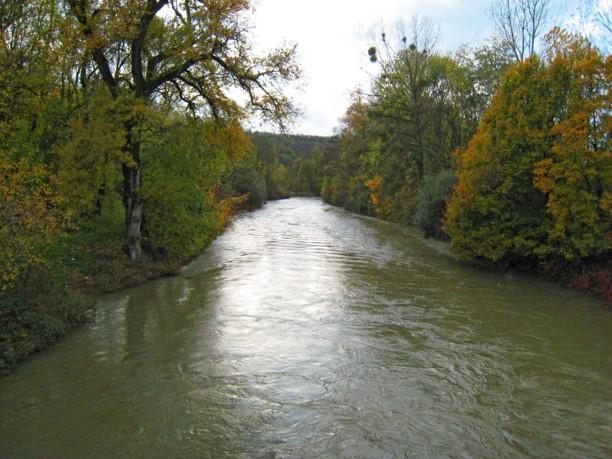About the project
The 2015 Paris Agreement stresses the need to protect biodiversity and secure the functional integrity of ecosystems, while fighting against climate change and adapting to its impacts. River networks are among Earth’s most threatened hot-spots of biodiversity. They act as ecological corridors for species and they safeguard biodiversity by linking terrestrial and aquatic ecosystems down to the sea. River networks also contribute substantially to the carbon cycle (including the evasion of carbon dioxide into the atmosphere) and they provide key ecosystem services (e.g. supply drinking water and food, climate regulation) which are essential to sustain human well-being. In river networks, aquatic communities, ecosystem functions and services are organised through local environmental constraints (e.g. physical habitat) and regional fluxes of organisms (dispersal) and resources (e.g. organic matter transport). These fluxes are threatened by climate change and increased human water use, which cause rivers and streams to dry up worldwide, including in Europe. Over 50% of the global river network include drying channels and this share is dramatically increasing worldwide. Drying river networks (DRNs) are not only crucial in the European Union (EU) but also worldwide, including South America, harbouring 30% of Earth's freshwaters and several of the world’s major biodiversity hotspots.



Because shifts from permanent to intermittent flow regimes represent major tipping points for rivers, with often irreversible environmental and societal consequences (including massive fish deaths and impaired water quality) we must urgently understand ecosystem processes and socio-ecological consequences of drying. However, DRNs have received little attention from scientists and policy makers, and the public is unaware of their importance. This makes predicting how climate change will alter riverine drying patterns and affect their biodiversity, ecosystem functions and services and the consequences of such alterations for both nature and humans impossible. Consequently, there is no effective integrated biodiversity conservation or ecosystem management strategy of DRNs facing climate change.
The Horizon 2020 project, DRYvER (Securing biodiversity, functional integrity and ecosystem services in DRYing riVER networks) consists of multidisciplinary teams of 25 experts from 11 countries in Europe, South America, China and the USA will build on EU efforts to investigate how climate change has cascading impacts on biodiversity, ecosystem functions and ecosystem services of DRNs. DRYvER aims to collect, analyse and model data from nine drying river networks (DRN) in Europe and South America to create a novel global meta-system approach that incorporates hydrology, socio-economics, ecology and biogeochemistry in order to craft strategies, tools and recommendations for adaptive management of river networks.
CELAC (Community of Latin American and Caribbean States) are involved in all Working Packages (WPs), with dedicated task in WP1-WP3, while USA and China partners will contribute to DRYvER dissemination and capacity-building activities to maximise the impact of the project.
Working in collaboration with resource managers and citizens, the DRYvER team plans to co-develop new strategies to mitigate and adapt to the effects of climate change on these networks by integrating quantitative and qualitative perspectives, including nature-based solutions with a strong socio-economic and legislative component.
DRYvER will investigate how biodiversity, ecosystem functions, ecosystem services and their values in DRNs are directly and indirectly altered by climate change through empirical and modelling work at relevant spatial and temporal scales.
Furthermore, DRYvER will provide knowledge-based strategies and tools for cost-effective adaptive management of DRNs in the EU and worldwide.
In particular, the objectives of DRYvER are to:
- Determine current and future patterns of DRNs in space and time;
- Develop a dynamic meta-system framework to catalyse our understanding of the effects of drying on river network biodiversity and key ecosystem functions;
- Assess socio-economic impacts of changes in DRNs through the identification of ecosystem services of DRN and their values;
- Identify options for environmental decision-making in DRNs;
- Enable science-policy interfacing to embrace adaptive management strategies of DRNs;
- Create shared value, capacity-building and public acceptance of the outcomes of the project.
The end results of DRYvER will contribute to reaching the objectives of the Paris Agreement and place Europe at the forefront of research on climate.
Overall concept of the project and main assumptions: DRYvER adaptive management cycle starts with biophysical structures (e.g. hydrology) that, together with fundamental processes of nature (e.g. biodiversity), underpin ecosystem functioning. Functioning ecosystems provide ecosystem services with values, in terms of benefits and improved wellbeing for humans. Values are determined for each of the benefits and include economic, social, health and intrinsic values that inform the goals of adaptive management of DRNs. Modifications in any chain link cause changes to the rest of the cycle. DRYvER will investigate the links in this cycle so that structured iterations can promote cost-effective adaptive management of DRNs. DRYvER will use this cyclic model as a structured loop embedded in a meta-system perspective to guide adaptive management of DRNs. DRYvER will translate climate projections into changes in flow intermittence patterns at multiple scales, including that of the strategically-selected focal DRNs. This physical setting will then be used to implement a dynamic meta-system perspective to understand the cascading changes in biodiversity, ecosystem functions and ecosystem services. This knowledge will be integrated to develop a multi-criteria decision framework combining scientific, management, socio-economic, legislative barriers and leverages to promote an adaptive management of DRNs.



